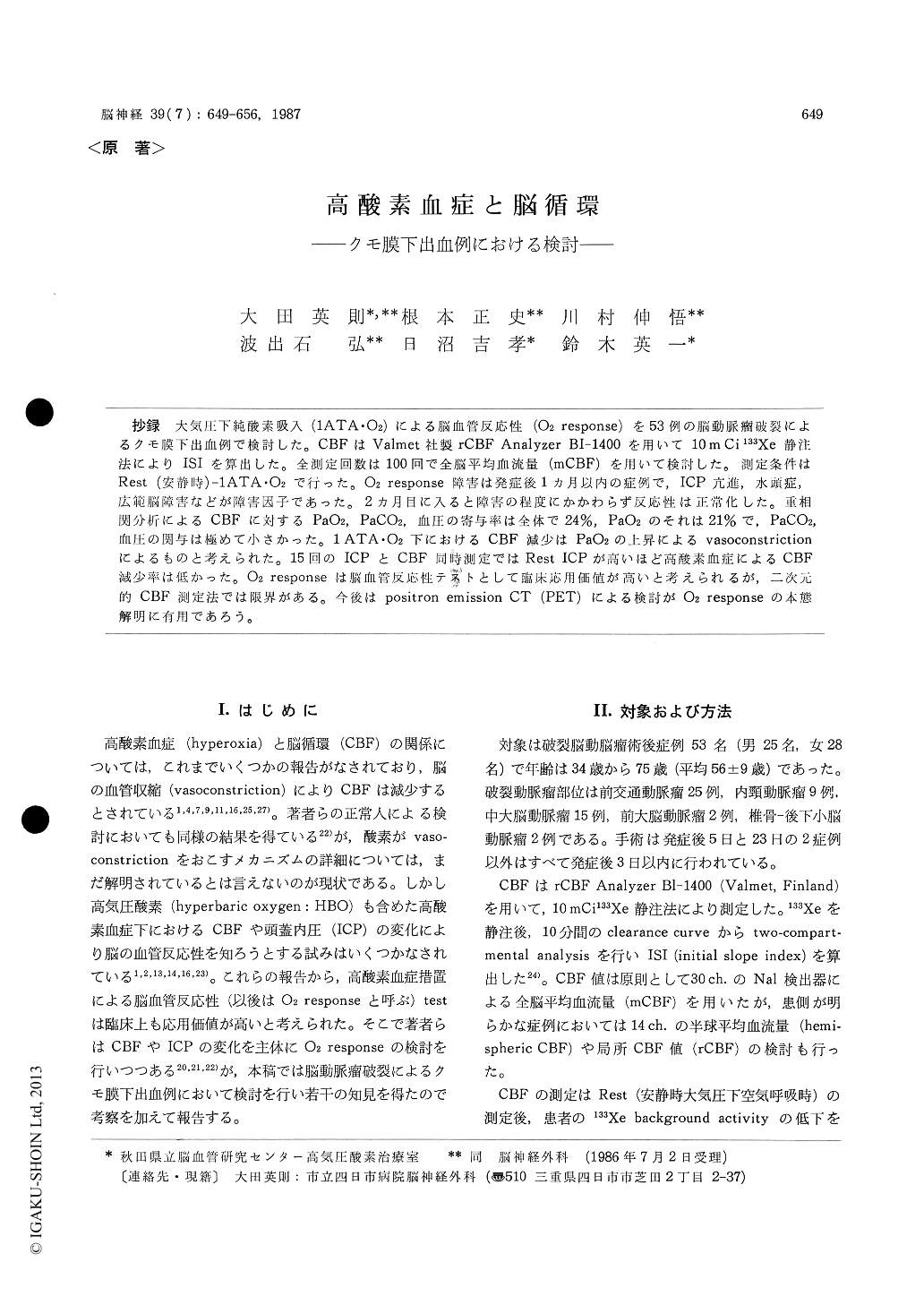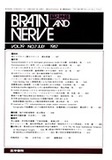Japanese
English
- 有料閲覧
- Abstract 文献概要
- 1ページ目 Look Inside
抄録 大気圧下純酸素吸入(1ATA・O2)による脳血管反応性(O2 response)を53例の脳動脈瘤破裂によるクモ膜下出血例で検討した。CBFはValmet社製rCBF Analyzer BI−1400を用いて10mCi133Xe静注法によりISIを算出した。全測定回数は100回で全脳平均血流量(mCBF)を用いて検討した。測定条件はRest (安静時)−1ATA・O2で行った。O2 response障害は発症後1カ月以内の症例で,ICP亢進,水頭症,広範脳障害などが障害因子であった。2カ月目に入ると障害の程度にかかわらず反応性は正常化した。重相関分析によるCBFに対するPaO2, PaCO2,血圧の寄与率は全体で24%,PaO2のそれは21%で,PaCO2,血圧の関与は極めて小さかった。1ATA・O2下におけるCBF減少はPaO2の上昇によるvasoconstrictionによるものと考えられた。15回のICPとCBF同時測定ではRest ICPが高いほど高酸素血症によるCBF減少率は低かった。O2 responseは脳血管反応性テストとして臨床応用価値が高いと考えられるが,二次元的CBF測定法では限界がある。今後はpositron emission CT (PET)による検討がO2 responseの本態解明に有用であろう。
The effects of oxygen inhalation at atmospheric pressure (1 ATA・O2) on CBF were studied in subarachnoid hemorrhage (SAH) patients due toruptured intracranial aneurysms to prove the use-fulness of the "O2 response" test for the evaluation of the cerebral vascular response. "O2 response" means the CBF (or ICP) decrease during hyperoxe-mia. CBF was measured by 10 m Ci 133Xe intrave-nous injection method using rCBF analyzer BI-1400 (Valmet). Two-compartmental analysis was used for the calculation of initial slope index (ISI). Stu-died cases were 53 postoperative SAH patients and 100 times examinations were done under the condi-tion of Rest-1 ATA・O2. The incidence of global disturbance of the O2 response was 33% from day 0 to 3, 31% during day 4 to 7, 30% during day 8 to 14, and 23% at day 15 to 30. But, after day 31, there was no case which revealed an impaired O2 response. It was not possible to detect focal or hemispheric abnormalities of the O2 response because of the limitation of noninvasive two-dimensional CBF measurement method employed.
The causes of O2 response abnormality, within a month after the onset, were increased ICP, hydro-cephalus and diffuse brain damage. Multiple regres-sion analysis proved that elevated PaO2 is the ma-jor factor in reducing CBF. CBF and ICP correla-tion study showed that the higher the Rest ICP, the fewer the CBF decreases during pure O2 inha-lation. This may indicate that the increase in ICP in the acute stage changes the O2 response accord-ing to the level of increased ICP. The authors' data comfirmed that the O2 response test was useful in evaluating the cerebral vascular response of stroke patients. In the future, a three-dimensional approach using positron ECT (PET) will be fruit-ful for evaluating the pathophysiology of "O2 re-sponse".

Copyright © 1987, Igaku-Shoin Ltd. All rights reserved.


